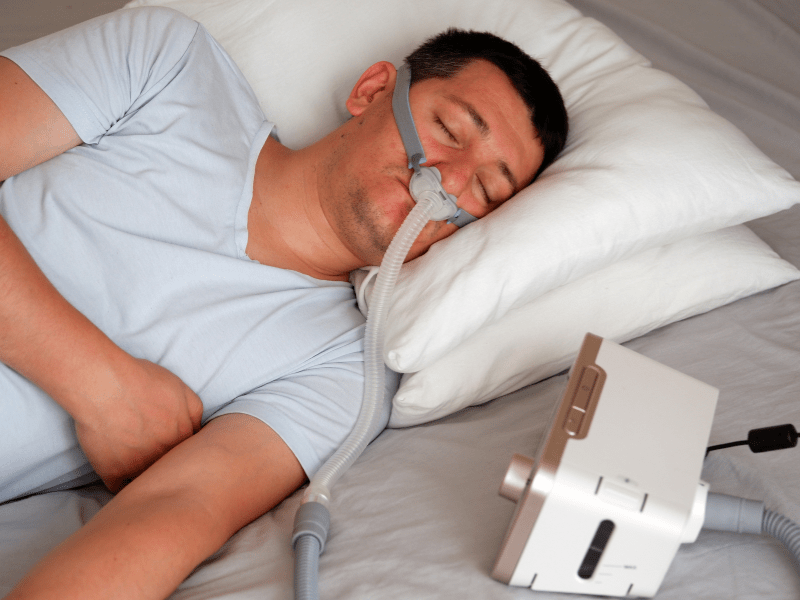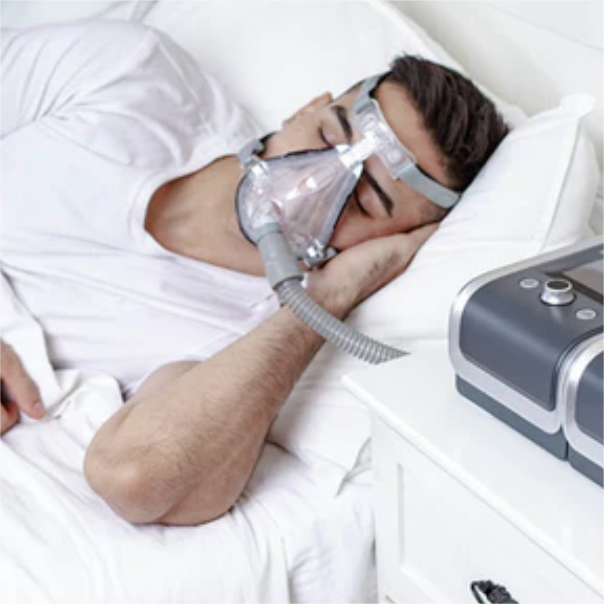How to Find the very best BiPAP Rental Providers Online
How to Find the very best BiPAP Rental Providers Online
Blog Article
Bipap vs. CPAP: Which Is the Best for Your Sleep Problem?
When browsing the complexities of sleep problems, the selection in between BiPAP and CPAP treatment is a critical consideration. Each modality uses one-of-a-kind benefits customized to specific problems, yet the decision depends upon private client demands and comfort levels. While CPAP supplies a consistent air movement appropriate for obstructive sleep apnea, BiPAP's twin stress settings may improve comfort for those with more elaborate respiratory issues. Comprehending these distinctions can significantly influence therapy effectiveness, leaving one to contemplate which choice really straightens with their wellness needs and way of living.
Comprehending Rest Disorders
Sleep disorders encompass a variety of conditions that interrupt typical rest patterns, affecting both the top quality and duration of remainder. These disorders can manifest in different kinds, consisting of insomnia, sleep apnea, narcolepsy, restless leg syndrome, and parasomnias. Each condition provides special obstacles, often bring about significant daytime tiredness, cognitive disability, and psychological disruptions.
Sleeplessness is defined by problem falling or staying asleep, while rest apnea involves duplicated interruptions in breathing throughout rest, usually resulting in fragmented rest. Narcolepsy, on the various other hand, is noted by extreme daytime drowsiness and abrupt rest strikes. Uneasy leg syndrome triggers uneasy feelings in the legs, triggering an uncontrollable urge to relocate them, which can also impede the capacity to drop off to sleep.
The impact of sleep problems extends past specific wellness, affecting overall efficiency, partnerships, and lifestyle. Comprehending the certain nature of each problem is vital for efficient medical diagnosis and therapy. As sleep health comes to be significantly recognized as a vital element of overall wellness, dealing with these conditions is vital for enhancing both sleep quality and everyday performance.
Just How CPAP Works
Continuous Favorable Respiratory Tract Pressure (CPAP) therapy is regularly employed as a key treatment for obstructive sleep apnea (OSA) The system of CPAP involves using a maker that supplies a steady stream of air through a mask worn during rest. This air movement maintains positive stress in the respiratory tract, preventing the collapse or blockage of the throat that can occur during sleep.
When an individual inhales, the CPAP equipment supplies a constant circulation of air, guaranteeing that the respiratory tract continues to be open - BiPAP Rental. This not just reduces the symptoms of OSA, such as snoring and interfered with rest patterns, however also lowers the connected wellness threats, consisting of cardiovascular difficulties and daytime tiredness
The stress setups on a CPAP maker can be personalized to meet specific client demands, frequently determined via a sleep research study. Overall, CPAP therapy has actually been revealed to significantly boost the top quality of rest and overall health and wellness for people suffering from obstructive rest apnea.
Just How BiPAP Functions
BiPAP, or Bilevel Positive Air Passage Pressure, is a specialized form of non-invasive ventilation that is especially beneficial for patients with conditions such as complex sleep apnea or respiratory system conditions. Unlike CPAP, which delivers a continuous stream of index air at a single stress, BiPAP offers two distinctive pressure settings: a greater inspiratory pressure for breathing and a lower expiratory stress for exhalation. This dual-pressure method permits simpler breathing, lowering the initiative called for throughout exhalation.
The tool runs with a mask fitted over the nose or mouth, linked to a maker that creates air stress. When the person breathes in, the device supplies the higher pressure to aid with airflow, ensuring that the air passage stays open. Upon exhalation, the machine immediately minimizes the pressure, making it extra comfortable for the client to take a breath out.

Key Differences Between BiPAP and CPAP

On the other hand, BiPAP (Bilevel Favorable Respiratory tract Pressure) provides two various stress settings: one for breathing and a reduced one for exhalation. This dual pressure system permits for more comfy breathing, especially for people who have problem with exhaling against i was reading this a continual stress. BiPAP is frequently advised for people with complex sleep apnea, persistent obstructive lung Continued disease (COPD), or those who call for extra support during rest.
Additionally, the intricacy of BiPAP gadgets typically causes a greater price and needs extra cautious titration than CPAP. BiPAP Rental. Understanding these key differences can assist in identifying which gadget may be better for particular rest problems, setting the foundation for informed treatment decisions
Picking the Right Treatment
The decision between BiPAP and CPAP treatment primarily pivots on the certain characteristics of the rest problem, the individual's overall health and wellness, and their convenience with the device. CPAP, which supplies a continual stream of air, is commonly suggested for obstructive rest apnea (OSA)
Alternatively, BiPAP supplies two degrees of stress: one for inhalation and a lower one for exhalation. This double stress system is advantageous for people with complex sleep apnea or those that experience difficulty breathing out versus a continuous stress. Furthermore, BiPAP is commonly recommended for individuals with breathing problems, such as persistent obstructive lung disease (COPD), where varying stress setups can boost comfort and compliance.
Ultimately, a thorough examination by a rest expert, including a rest research, can aid figure out which therapy aligns ideal with the patient's needs. Variables such as comfort, convenience of use, and specific medical conditions ought to additionally be taken into consideration to enhance treatment outcomes.
Conclusion
In summary, both BiPAP and CPAP serve distinct objectives in the monitoring of rest disorders. CPAP works for obstructive rest apnea with regular air flow, while BiPAP provides double pressure settings that boost comfort for those with intricate sleep apnea or respiratory system concerns. The selection in between these therapies must be led by individual requirements and conditions, demanding a detailed evaluation by a rest expert to make certain optimum treatment results and improved top quality of rest.

Generally, CPAP treatment has been shown to substantially enhance the top quality of sleep and overall health and wellness for people experiencing from obstructive sleep apnea.
BiPAP is typically advised for patients with intricate rest apnea, chronic obstructive pulmonary condition (COPD), or those that require additional assistance throughout rest.
CPAP is reliable for obstructive rest apnea through constant airflow, while BiPAP offers twin pressure settings that improve convenience for those with intricate rest apnea or breathing concerns.
Report this page